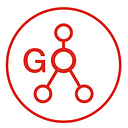Global Systems — Local Action — How IFRC GO helps put NS Local Units on the map
The Red Cross and Red Crescent Societies are present in nearly every country in the world. Each one is made up of an unparalleled network of community-based volunteers and staff who provide a wide variety of services. This global network composed of 191 National Societies, working out of 225,000 local units.
The specific role of National Societies and their services varies by country. With so many places where Red Cross and Red Crescent personnel work directly with communities, the effective management of local units’ data has long been a challenge.
Recognizing the pivotal role of local units in delivering humanitarian aid and emergency response, the IFRC, with the support of the British Red Cross and Norwegian Red Cross, has worked with National Societies to collect professional health service unit data and validate existing branch office information. The project directly aligns with the IFRC’s localization agenda, aiming to equip local actors with the tools and information they need to respond when disasters strike.
Bridging the Data Gap: A Global Initiative
Drawing from various efforts to map the branch network through the SIMS and ICRC, as documented thoroughly on this blog, the current dataset aggregates comprehensive information on branch offices. However, the challenge lies not just in data collection but in validation, ensuring accuracy and reliability — a task undertaken in collaboration with 21 National Societies to date.
The dataset is also integrated with the professional health service units, collected with the IFRC Health Team, with financial support from the Norwegian Red Cross and close collaboration with National Societies. This data provides detailed information on all aspects of professional health services and encompasses over 95% of the National Societies.
Unveiling the Local Units Data Dictionary — A unifying system which allows for cross-network interoperability.
Central to this endeavor is the Local Units Data Dictionary, carefully and collaboratively designed to capture vital attributes of local units, while also being able to reflect and accommodate their variation. From names and types to coverage and coordinates, the dictionary standardizes data across diverse organizational and cultural contexts, facilitating seamless integration and analysis. The inclusion of optional fields such as subtype and focal points information allow for flexibility, reflecting the diverse nature of local units.
A User-Friendly Interface: Navigating the Platform
We’ve come a long way since we first blogged about the discovery phase before building this tool. The GO platform, the IFRC’s digital hub for humanitarian operations, has emerged as the cornerstone of this transformative initiative. As part of the Country Pages redesign, the local unit module provides an easy-to-use interface that allows National Societies to manage their local unit information, propelling the Movement into a new era of connectivity and efficiency.
The local unit interface offers both map and list views, catering to diverse user preferences. Non-logged-in users can access a simplified map view displaying public local unit data, while logged-in users gain access to comprehensive information and editing capabilities. The platform’s intuitive design streamlines data management, empowering users to contribute, validate, and update local unit information effortlessly.
Ensuring Data Integrity: Validation and Quality Control + role of NS
Data validation lies at the heart of the platform’s integrity, with National Societies playing a pivotal role in verifying information. Through a phased approach, IFRC engages NSs in the validation process, ensuring that only accurate and validated data is displayed. Rigorous quality control measures, including audit trails and version control, further bolster data reliability and transparency.
We are working on developing local unit data management standard operating procedures (SOPs) to be shared on the GO Wiki. The SOPs will provide a step-by-step process for managing local units and outline the roles and responsibilities of those involved in the procedure.
Leveraging Local Units for Global Impact: The Power of Geospatial Analytics
The value of improved local unit data management will be realised when it is applied to improve IFRC’s operational effectiveness and strategic positioning within the global humanitarian landscape. The data can be used to promote National Society activities to foster peer-learning and strategic partnerships, particularly since local units serve as vital conduits for community engagement, visibility, and impact. Furthermore, use of the data for analysis offers unparalleled opportunities for informed decision-making and resource allocation.
Conclusion: The Future of Local Units Data Management
One thing is for sure: this process doesn’t end with data collection and management but opens a gold mine of opportunities for integration with existing systems and platforms aimed at addressing humanitarian challenges. This data comes at a critical time, as disasters are projected to increase rapidly in the future. Understanding how local units are anticipated to be affected by ongoing trends is essential. The addition of local units to the GO platform coincides with our efforts on geospatial enhancements, aiming to establish a single source of geospatial truth for the IFRC. Soon, this data will be a key component of deployment packages for Operational and IM Coordinators, and it will also be integrated into existing workflows such as Field Reports, DREF requests and imminent event email notifications to our membership.
